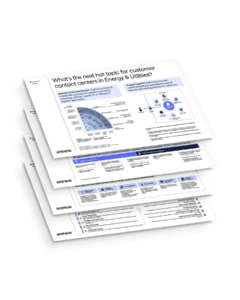Journey orchestration in pharmaceutical marketing (Blog 1 of 4)
Eraneos is bringing a series of blogs on the topic of journey orchestration in pharmaceutical marketing. We start with talking about this concept and then dive deeper into the different aspects to consider such as omnichannel, customer journey, digital capabilities and organizational change and learning. If you find this interesting, please follow our LinkedIn page or register for our newsletter so you can stay up to date.
Every pharma marketeer knows about customer journey mapping and may agree that it is limited by a theoretical visualization of the customer experience across high-level segmentation, drawing information from siloed, channel-specific technology. Usually, your goal is to make the journey for individual customers as successful and valuable as possible. Whether “success” is measured by reducing the cost to serve, increasing conversions, or reducing effort for the customer, optimization is important for achieving your goals. Optimizing customer journeys might involve using customer segments or personas to design your customer experience. Though this helps to personalize the journey to some extent, it’s not tailored to specific customers and their actions. Thus, you might be slightly disappointed with the practical implementation of the journey insights.
But advanced software tools allow pharma marketers to go beyond journey maps. Such tools help to visualize real-time, individual user journeys and hyper-personalize the customer experience. That’s where journey orchestration comes in.
Journey orchestration is the process of understanding customer behavior across all channels, using technology to apply that data to map out personalized campaigns for optimized customer engagement. It enables marketers to automate customized, omnichannel interactions with their customers and collect real-time data with which marketeers can build specific user profiles. Think of it as creating an individualized journey map for each and every customer and prospect. Then using machine learning to understand and automate the critical pivots you need to make—on the fly—to keep them engaged.
Orchestrating means taking dynamic action towards optimizing each journey, using real-time customer insights as a guide. This journey typically encompasses all the stages of the customer lifecycle, from initial awareness and consideration to purchase, usage, support, and advocacy.

Figure 1; Journey orchestration stepwise process to get from generic segments of customer to building engaged customers
The goal of journey orchestration is to create a seamless and personalized experience for customers. This is done by coordinating and optimizing the different channels and touchpoints your customers interact with driving customer engagement when done well. This can include websites, mobile apps, email, social media, customer support and more. Data coming from your digital marketing tools enriches the customer segments and profiles so you move from just reaching unknown customers with generic segmentation to known customers (see figure 1).
Journey orchestration focuses on creating experiences for an individual, rather than a customer segment. It’s intrinsically tied to journey analytics and journey mapping but goes one step further because it involves taking direct action to personalize journeys as they happen – at scale.
Here are the key aspects to consider within your organization to gear up for journey orchestration:
- Mapping the Customer Journey: The first step is to understand and map out the customer journey, identifying all the touchpoints and interactions a customer may have with the brand.
- Data Integration: Gathering and integrating customer data from various sources, such as CRM systems, customer databases, and online analytics, is crucial for personalizing the customer journey.
- Customer Segmentation: Segmenting customers based on their behavior, preferences, and demographics helps in tailoring interactions to specific customer groups.
- Content and Channel Management: Creating relevant content and selecting the right communication channels for each touchpoint in the customer journey.
- Personalization: Using data and insights to deliver personalized experiences to customers, such as personalized product recommendations or targeted marketing messages.
- Automation: Automating processes and interactions to ensure timely and consistent messaging and actions throughout the customer journey.
- Measurement and Optimization: Continuously monitoring and analyzing the customer journey to identify areas for improvement and optimization.
Journey orchestration is often facilitated by technology platforms and customer experience (CX) tools that allow organizations to design, execute, and manage customer journeys effectively. We will talk about that in the next blog post. Stay tuned!




